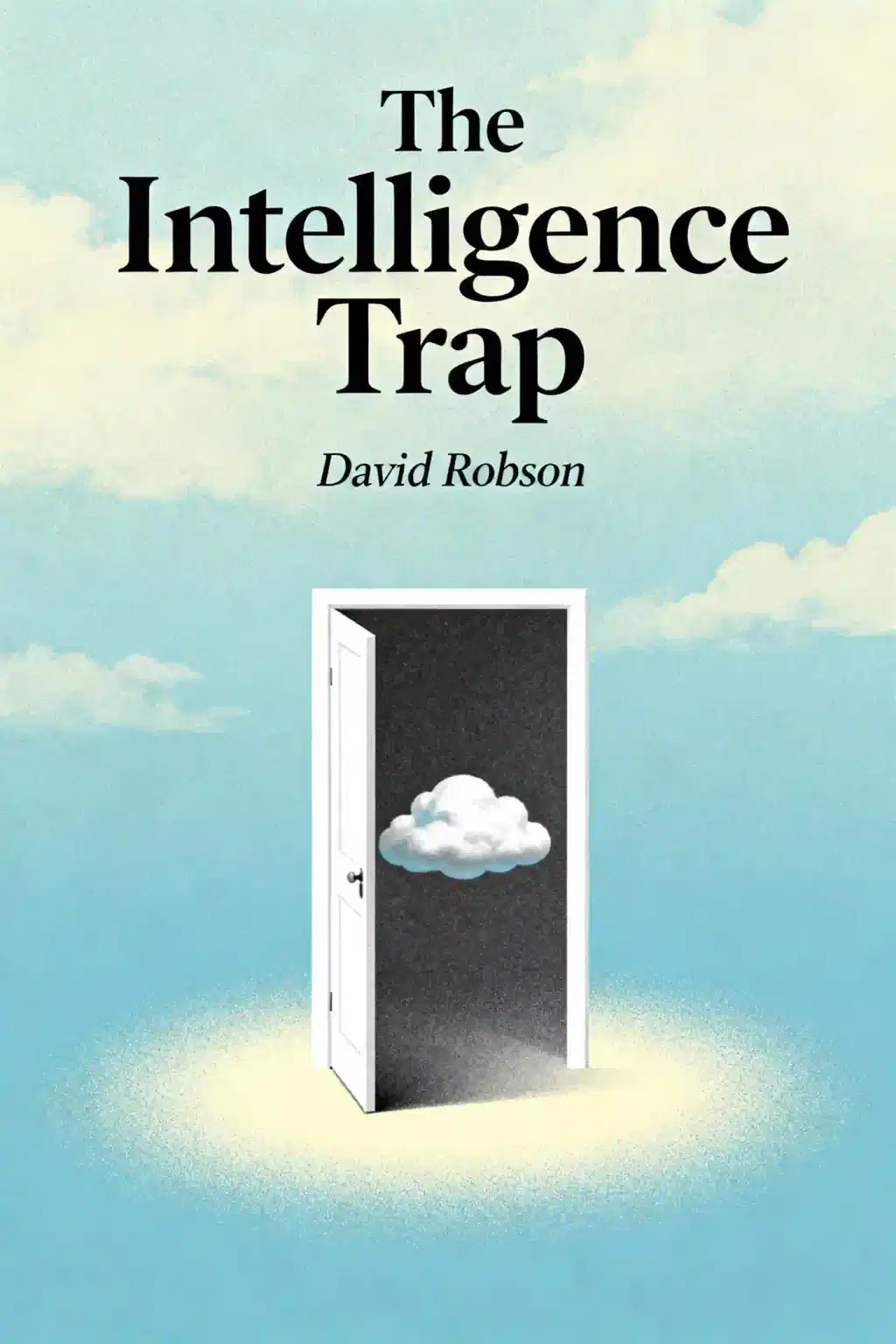What is
The Intelligence Trap by David Robson about?
The Intelligence Trap explores why intelligent people often make poor decisions, examining cognitive biases like overconfidence and "earned dogmatism." David Robson combines cutting-edge psychology, historical case studies (e.g., Thomas Edison’s missteps, NASA failures), and practical strategies to avoid errors. It reveals how expertise can backfire and offers tools to enhance critical thinking and resist misinformation.
Who should read
The Intelligence Trap?
This book suits professionals, leaders, educators, and students interested in psychology, decision-making, or self-improvement. It’s particularly valuable for those navigating complex industries like tech, finance, or healthcare, where cognitive errors carry high stakes. Readers seeking to debias their thinking or understand misinformation dynamics will find actionable insights.
Is
The Intelligence Trap worth reading?
Yes, with a 6/10 rating from critic Toby Sinclair, the book is praised for exposing "mental pitfalls of intelligence" and offering "evidence-based wisdom." Translated into 15 languages and endorsed by media like the Financial Times, it provides timeless lessons backed by Houdini’s quote: “The greater brain a man has…the easier it has been to mystify him”
What are the main concepts in
The Intelligence Trap?
Key ideas include:
- Earned dogmatism: Expertise leading to intellectual rigidity.
- Dysrationalia: The gap between intelligence and rational decision-making.
- Cognitive reflection: Slowing down to question assumptions.
Robson illustrates these with examples like Nokia’s failure to adapt and the FBI’s confirmation bias in investigations.
What are key quotes from
The Intelligence Trap?
- “The greater brain a man has…the easier it has been to mystify him” (Houdini) highlights overconfidence in expertise.
- “Smart people are not only just as prone to mistakes—they may be even more susceptible” underscores the book’s central thesis.
How does
The Intelligence Trap address cognitive biases?
Robson dissects biases like confirmation bias, sunk-cost fallacy, and motivated reasoning. He cites the FBI’s fixation on flawed forensic techniques and Nokia’s reluctance to abandon outdated strategies as examples. The book advocates metacognition—thinking about thinking—to mitigate these errors.
What practical advice does
The Intelligence Trap offer?
Strategies include:
- Cultivating intellectual humility.
- Embracing “red team” thinking to challenge assumptions.
- Using pre-mortems to anticipate failures.
Robson also emphasizes diversifying expertise and creating environments where dissent is encouraged.
Are there criticisms of
The Intelligence Trap?
Some reviewers note the later chapters feel less focused, and the 6/10 rating from Toby Sinclair cites “final 50 pages weren’t the best.” However, the book’s synthesis of research and real-world applications is widely praised.
How does
The Intelligence Trap compare to Robson’s
The Expectation Effect?
While The Intelligence Trap focuses on decision-making flaws, The Expectation Effect examines how mindset shapes health and performance. Both emphasize cognitive flexibility, but the latter delves into placebo-like effects and stress resilience.
How does
The Intelligence Trap use historical case studies?
Robson analyzes Thomas Edison’s dismissal of alternating current, NASA’s Columbia shuttle disaster, and the FBI’s mishandling of the Miami Shootout. These examples demonstrate how intelligence and expertise can paradoxically fuel catastrophic errors.
What role do social connections play in
The Intelligence Trap?
Though not the central theme, Robson hints at social intelligence’s importance in avoiding echo chambers. This idea expands in his 2024 book The Laws of Connection, which explores relational cognition and collaborative problem-solving.
How is
The Intelligence Trap relevant in 2025?
Amid AI-driven misinformation and rapid technological change, the book’s lessons on critical thinking and intellectual humility remain vital. It equips readers to navigate complex modern challenges, from deepfakes to organizational decision-making.















